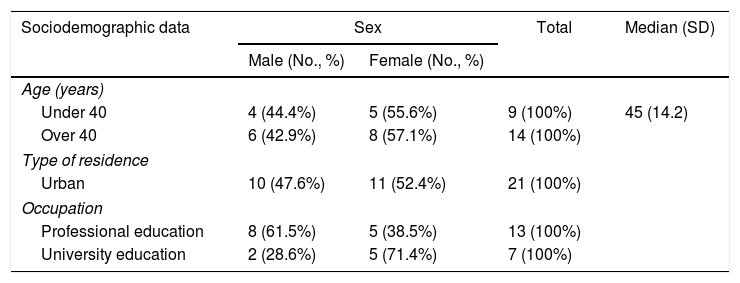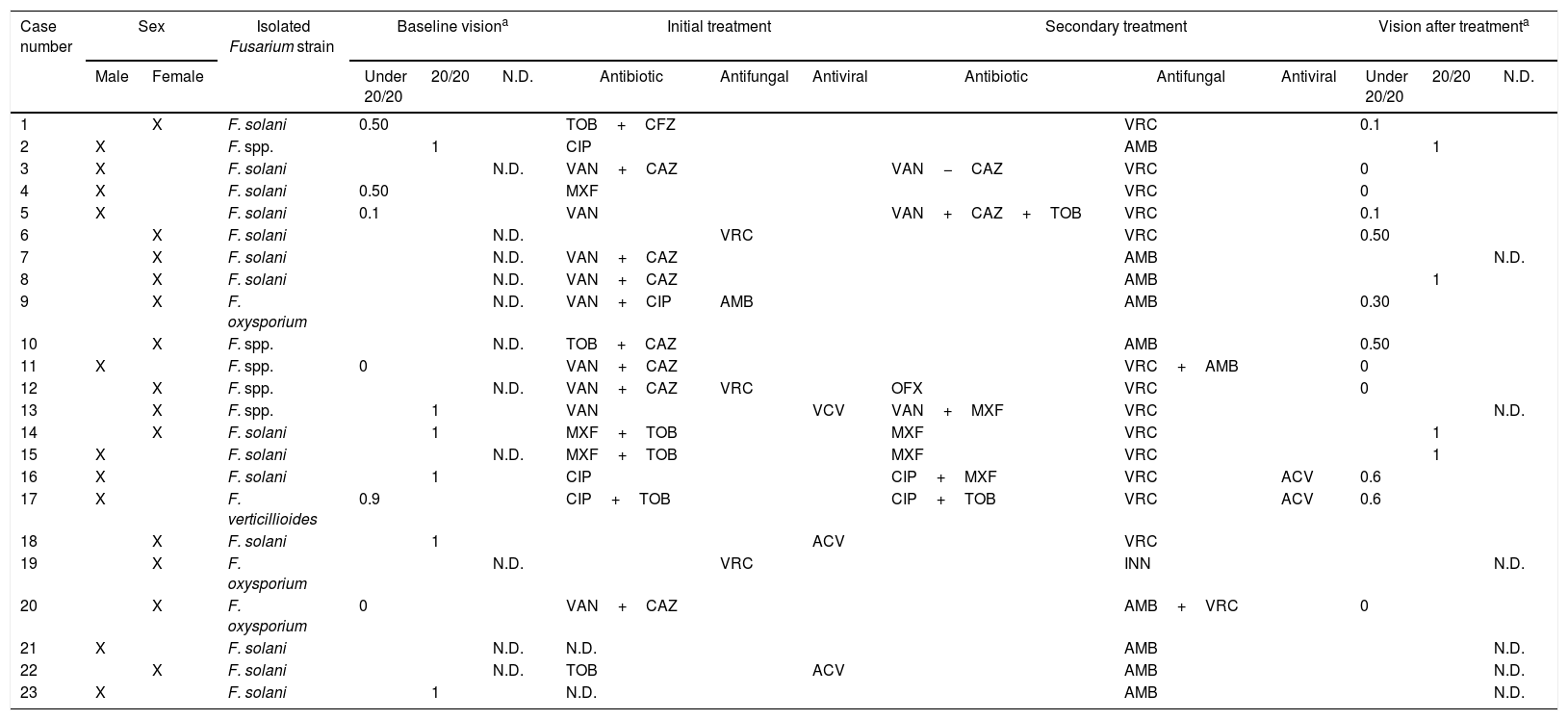To describe the clinical-epidemiological characteristics of a case series of fungal keratitis associated with Fusarium spp., in Spain during the years 2012 to 2014.
MethodsA retrospective study of a case series was conducted on a systematic random sample of 10% of patients identified in Health Centers of provincial capitals (n=250). The centers were asked whether they had been presented with cases of Fusarium spp. keratitis characterized by microbiological methods. Of the 23 centers that responded, 14 had detected cases, with 13 of them accepting to participate, and 11 of them completing the study. The latter being sent a previously validated questionnaire. The variables analyzed were: age, gender, habitual residence, profession, disease and medical history (previous systemic and ocular diseases, previous eye surgeries), and their outcomes.
ResultsThe response rate was 92%, identifying 23 cases of Fusarium spp. of which 21 (91.3%) of them lived in urban areas. The professions most affected by the disease included chefs, administrative, and technical, with 13 cases (56.5%). The treatment guidelines established to confirm the infection showed the combined use of topical antibiotics associated with antiviral and/or antifungal agents. The use of contact lenses (86.9%) was the main risk factor.
DiscussionThis study showed that this is a rare disease in Spain, but that a large percentage of people who present with the disease are resident in urban areas, and they work in closed environments, focusing attention on microtraumas caused by use of contact lenses.
Describir las características clinicoepidemiológicas de una serie de casos de queratitis fúngica asociada con Fusarium spp., en España durante los años 2012 a 2014.
MétodosEstudio retrospectivo de una serie de casos. Se identificaron los centros sanitarios que se encontraban en las capitales provinciales (n=250), obteniéndose una muestra aleatoria sistemática del 10%. Se les preguntó si habían presentado casos de queratitis por Fusarium spp. caracterizados mediante métodos microbiológicos, 23 centros respondieron, detectando casos en 14 de ellos, aceptando participar 13, completando el estudio 11 instituciones, a los que se les envió el cuestionario previamente validado. Las variables analizadas fueron: edad, sexo, residencia habitual, profesión, antecedentes patológicos y médicos (enfermedades sistémicas y oculares previas, cirugías oculares previas) y su evolución.
ResultadosLa tasa de respuesta fue del 92%, identificando 23 casos de Fusarium spp.; 21 casos (91,3%) vivían en zonas urbanas. Los profesionales fueron los más afectados por la enfermedad (chef, administrativo, técnico) con 13 casos (56,5%). Las pautas de tratamiento establecidas antes de la confirmación de la infección evidenciaron el uso combinado de antibióticos tópicos asociados a agentes antivirales y/o antifúngicos, siendo el principal factor de riesgo el uso de lentes de contacto (86,9%).
DiscusiónEs una enfermedad poco frecuente en nuestro medio, un gran porcentaje de las personas residían en áreas urbanas y su trabajo se realizaba en entornos cerrados, enfocando la atención en los microtraumas causados por el uso de lentes de contacto.











